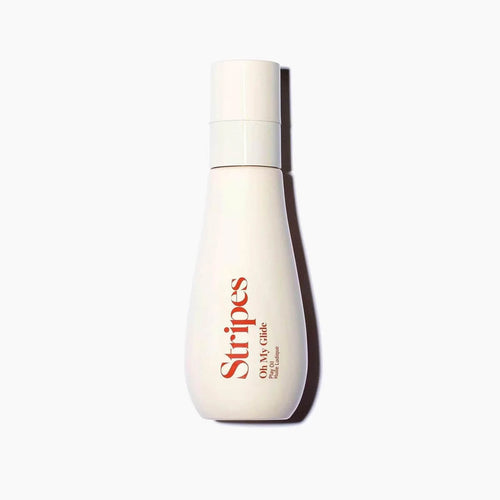My Skin is More Fragile and Sensitive: Should I Still Wax?
You and your body hair have probably gone through a lot of phases together: nicking your shin with that pink disposable plastic razor in middle school; the summer you went to Lilith Fair and grew your armpit hair out; your Sex and the City-inspired "wax EVERYTHING" era; the years when your kids were little and you quit shaving above the knee.
When we begin to go through menopause, skin on our bodies may become more fragile and sensitive. Since waxing isn't always a delicate procedure, now may be a good time to re-evaluate.
“As women go through menopause, the skin tends to become thinner, drier, and more fragile due to changes in hormone levels,” says dermatologist Dr. Julia Carroll. As estrogen declines, our skin produces less oil and collagen, which in turn can make it lose elasticity and flexibility. Because of this, the harsh ripping and pulling of a waxing session — whether on your legs or your bikini line — has the potential to do real damage, even if your skin has always taken easily to waxing before.
Waxing drier menopausal skin can cause redness, irritation, or even tearing of skin. Ow! Not a great way to start swimsuit season.
Pay attention to your waxes, noting if they’re suddenly causing pain, bumps, or small cuts in your skin. And always make sure that your aesthetician is using high-quality wax and has experience working with mature skin.
“While there is no hard-and-fast rule that says you should stop waxing your legs or bikini line in menopause,” says Carroll, “it’s important to listen to your body and be mindful of any changes in your skin.”
Experiment with new methods of body hair removal
If waxing is causing damage to your skin and you’re not too fond of futzing around with razors, not to worry — there are other hair removal methods to try. Laser hair removal is one of them, and it’s longer-lasting.
Hair-removal lasers specifically target the “pigmentation within the hair follicle,” says board-certified cosmetic dermatologist Dr. Michele Green. The laser’s light is converted to heat which damages the follicle, curtailing the hair’s ability to grow. The technique “[leaves] the surrounding skin unaffected,” says Green, so it doesn’t irritate skin the way waxing does. Laser hair removal requires multiple sessions, but results last for several years and can be permanent for some people, while others require touch-up sessions.
Because laser hair removal requires pigmentation within the hair follicle, it won’t work for body hair that has turned gray or white. It also won’t work on tattooed areas of the body. For those scenarios, there’s electrolysis, another long-term hair removal technique.
“During electrolysis, an electric current is delivered to the follicle to destroy the root and damage the follicle to prevent hair growth,” Green explains. Electrolysis has a reputation for being more painful than laser hair removal, but the results are even longer-lasting: Once you complete your course of treatment, your hair will never come back. Plus, it’s the only permanent hair removal treatment approved by the FDA.
Re-think your relationship to your body hair
Now is also a good time to take a moment and see how you feel about your body hair these days, especially if you’ve noticed it growing in a bit sparser all over your body and removing it feels less pressing. If you’d still prefer to go completely bare, that’s absolutely fine; if you’re OK with a little stubble or some light armpit hair, that’s great, too.
As in all things meno, there’s no right or wrong answer, just whatever blows your (leg) hair back.
By Gabrielle Moss
Gabrielle Moss is the editor at Stripes. She's the author of Paperback Crush: The Totally Radical History of '80s and '90s Teen Fiction. Her work has appeared in the New Yorker, Slate, GQ, Buzzfeed, Marie Claire and elsewhere.











